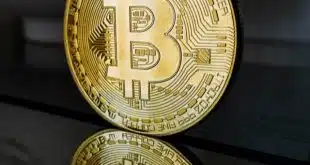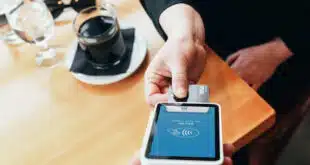Making a mobile payment is not commonplace yet, but the trend is heading that way, at least if a forecast from research firm eMarketer Inc. holds true.
Mobile payments in the United States in 2014 are predicted to reach $3.5 billion, more than double the 2013 figure of $1.59 billion, according to eMarketer’s new “US Mobile Payments 2014: Updated Forecast and Key Trends Driving Growth” report.
The pace of growth for 2015 and beyond is forecast to grow even quicker. EMarketer predicts the value of U.S. mobile payments will be $8.95 billion in 2015, and grow to $118.01 billion by 2018.
The $3.5 billion forecast for 2014 is a small percentage of overall retail sales, says Bryan Yeager, analyst at New York-based eMarketer. Total U.S. retail sales were $4.53 trillion in 2013, according to eMarketer. “That’s barely scratching the surface,” Yeager says of the mobile-payments figure.
The report also found that 82.2% of U.S. adults surveyed in August don’t use mobile payments, with 13.5% using a service to make a mobile payment and 6% using a smart phone to accept a mobile payment.
Many U.S. consumers are hesitant to use mobile payments, but they also believe it will be commonplace to pay by smart phone in the future. Of those surveyed, 23.2% said mobile payments will definitely be widely used in the next five years, with 53.7% said probably. Only 16.7% said mobile payment probably won’t be widely used, and 6.2% agreed that it definitely won’t happen.
Already, numerous companies, including retailers, consumer electronic-device makers and payments firms, have multiple mobile-payment options. Ranging from Apple Inc.’s Apple Pay, CurrentC from Merchant Customer Exchange, LevelUp, LoopPay Inc., PayPal Inc. Starbucks Corp., Softcard and many others, consumers have a lot of choice, Yeager says.
“Consumers are getting exposed to mobile payments more often, and they’re able to use mobile payments more often,” Yeager tells Digital Transactions News. That exposure stands to increase following the scheduled release this month of Apple Pay, a near-field communication (NFC) mobile-payment scheme.
In the past few years, mobile-payment use and awareness largely has been relegated to major cities and among affluent, younger consumers, Yeager says. Apple Pay, because of the brand recognition of Apple, will increase the overall awareness among a broader population of consumers, he says.
One obstacle to future mobile-payment adoption is the fragmented nature of the selections, he says. That there are many options for consumers, and retailers, is a good situation, Yeager says, but the lack of standards for mobile payments could have a role in slowing adoption. For example, some mobile payment wallets restrict which cards can be placed in the wallet.







